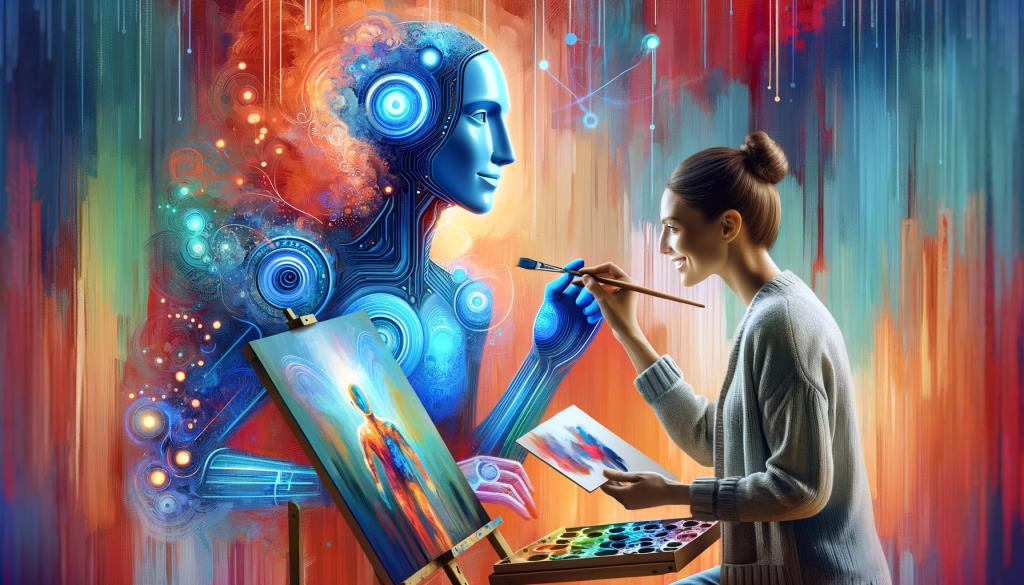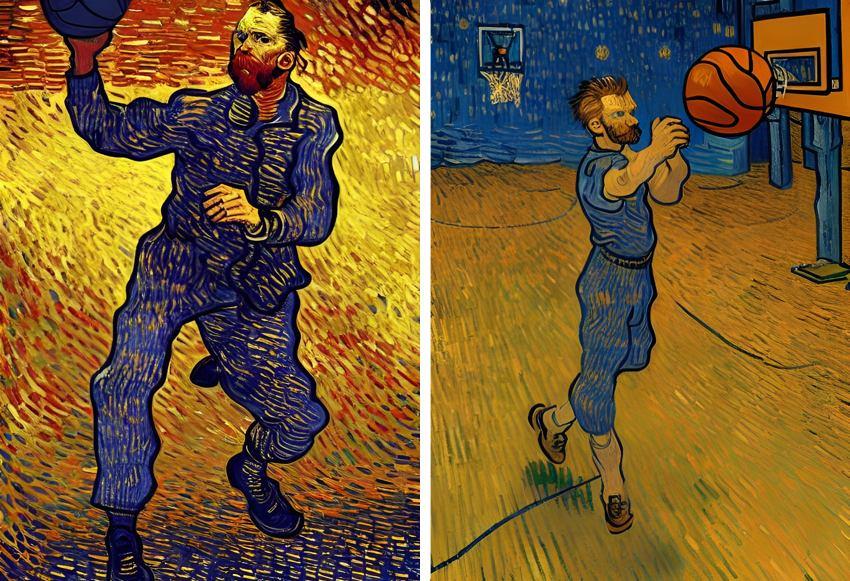(MENAFN- USA Art News)
In recent years, artificial intelligence (AI) has made its indelible mark on numerous industries, and the art world is no exception. Driven by advancements in technology, AI-generated art has captivated audiences and challenged traditional notions of creativity, authenticity, and value. As we delve into the rise of AI in art creation, we explore the opportunities it presents, alongside the challenges it poses to artists, collectors, and society at large.
The Emergence of AI-Generated Art
AI-generated art refers to the creation of visuals, music, or other artistic expressions through machine learning algorithms and generative adversarial networks (GANs). These systems analyze vast datasets of existing artworks to learn patterns, styles, and techniques. Utilizing this knowledge, AI can produce unique artwork that has sparked both awe and controversy.
One of the key moments that propelled AI-generated art into the public consciousness was the auction of Edmond de Belamy, a portrait created by an algorithm. The artwork was sold at Christie's for an astonishing $432,500, a price that questioned the very notion of authorship and value in art. This moment illustrated not only the potential of technology in art but also the evolving definitions of what constitutes an artist and an artistic creation.

Opportunities Brought by AI in Art
Empowerment of Creatives: AI serves as a tool that can augment human creativity. Rather than replacing artists, AI provides them with new mediums and methods. Many artists are using AI to enhance their practices, experiment with styles, and push the boundaries of traditional art forms. By utilizing AI-generated art, artists can collaborate with technology to explore uncharted territories of creativity.
Accessibility and Democratization: A significant advantage of AI in art is its role in making art creation more accessible. Individuals without formal training in art can use AI tools to generate artistic works, allowing for broader participation in the art community. Platforms and applications have emerged that enable users to create artwork using AI algorithms, breaking down barriers to entry.
New Aesthetic Experiences: AI can create visually striking artworks by amalgamating various styles and techniques that may not have been possible for human artists. This fusion of influences offers audiences new aesthetic experiences and challenges existing art paradigms. It invites viewers to contemplate the evolving nature of art and the role of technology within it.
Innovative Art Forms: AI has sparked the creation of entirely new art forms, such as generative art, where algorithms produce art based on specific parameters. This form of expression challenges the traditional notion of static artworks, leading to dynamic creations that can change and evolve over time. As artists explore these new mediums, they redefine what art can be in the digital age.
Challenges in AI Art Creation

Despite the opportunities presented by AI-generated art, the integration of technology into the creative process comes with several challenges.
Authenticity and Originality: One of the primary debates surrounding AI-generated art revolves around authenticity. What does it mean for an artwork to be“original” if it's created by an algorithm trained on existing styles? Critics argue that art should emanate from the human experience and emotion, which AI lacks. The concept of originality, once rooted in an individual artist's unique perspective, is now being reevaluated in light of machine-generated works.
Intellectual Property Concerns: The question of intellectual property rights also poses a significant challenge. If an AI generates an artwork based on the styles of established artists, who owns the rights to that creation? How do we protect the intellectual contributions of artists while integrating AI into the creative process? These legal uncertainties complicate the evolving relationship between art and technology.
Cultural Bias and Representation: AI models are trained on datasets that often reflect existing cultural biases. As a result, the artworks generated may inadvertently perpetuate stereotypes or exclude entire groups. This raises ethical concerns about representation, leading artists and technologists to consider how to create more inclusive and diverse algorithms that reflect a broader spectrum of human experience.
Market Dynamics: The art market is undergoing unprecedented changes as AI-generated works gain traction. Traditional artists may find it challenging to compete within a growing market saturated with algorithmically produced art. Furthermore, the commodification of AI-generated pieces raises questions about the future value of art. How will collectors navigate this new landscape, and what will determine the worth of an AI-created artwork compared to a handcrafted piece?
The Future of AI in Art
As the relationship between artificial intelligence and art evolves, it is not likely to diminish traditional forms of artistic expression. Instead, we can expect to see a hybridization of creativity where human touch and AI capabilities coexist. Artists can leverage AI as a collaborator, allowing them to explore innovative ideas and unimaginable vistas while ensuring that human touch remains integral to the artistic process.
To harness the potential of AI in art ethically and responsibly, industry stakeholders, including technologists, artists, and policymakers, must come together. By fostering open dialogues about authenticity, representation, and market dynamics, the art community can shape a future where creativity is enhanced-not diminished-by technology.
The rise of AI in art creation is reshaping the art world, presenting both challenges and opportunities. While it democratizes and diversifies artistic expression, it also compels us to consider difficult questions about authenticity, ownership, and representation. Embracing this technological evolution, artists and audiences alike have the chance to engage with art in new and transformative ways-ensuring that the blend of human creativity and artificial intelligence will continue to inspire and challenge our understanding of art for years to come.
MENAFN19112024005694012507ID1108904448
Legal Disclaimer:
MENAFN provides the information “as is” without warranty of any kind. We do not accept any responsibility or liability for the accuracy, content, images, videos, licenses, completeness, legality, or reliability of the information contained in this article. If you have any complaints or copyright issues related to this article, kindly contact the provider above.